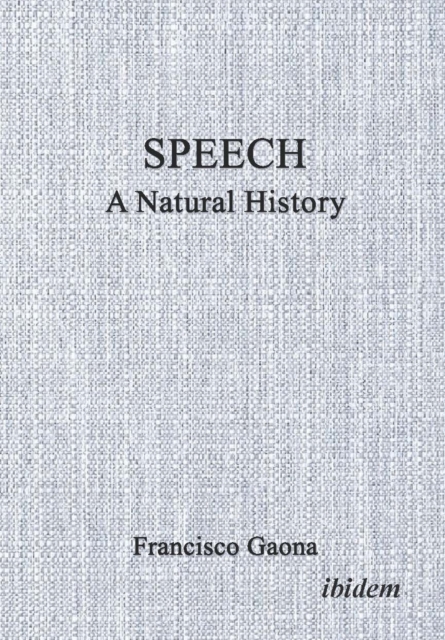What is speech? Where did it come from?
Speech is the exchange of information for mutual social orientation. Its fundamental features are simplicity of structure and universal referential usage.
Gaona traces the evolution of signal calls of anthropoid apes and early hominins to the vocalized utterances of speech. The signal call's frequency components were deconstructed and rearranged (isomeric reordering), leading to the breakthrough discovery of the syllable as a uniquely creative unit of communication. Determining the source of the vocalic and consonantal elements of the syllable as its integrative framework is essential to understanding the origin of speech.
Vowels are the key element of every syllable, positioned invariably at the peak of an acoustic wave form to which consonantal elements can be added at the beginning or end. Vowels were first isolated during the ritualized practice of group tonal vocalization as the only consistent, effective carriers of referential sound, with proto-consonantal oral noises excluded as interruptive and unsustainable (i.e., t - k - b). At the utterance of a vowel (or vowel equivalent), the syllabic wave emerges. Subsequently, the previously excluded noises would be incorporated with the vowel into the cohering acoustic wave-energy field of the syllable. As an ordered set of phonic elements, the syllable is the fundamental combinatory (tap, pat, apt) and permutational (tap-es-try, pat-tern, ap-ti-tude) structure generative of lexical items: the foundational basis of speech.
Gaona's study focuses on:
The semiotic and cognitive importance of the ritual display performance (a series of actions that are performed in a specific order and often have cultural or spiritual significance);
How hominins first learned the significance and use of signs by tracking animals, an essential precursor of speech born of the need to track data and communicate the results to the group;
Stepping as a group: the regulated collective pace as the source of sustained rhythmical progression, leading to dance, music and the prosody of speech (the patterns of rhythm and sound); and
The interval: uniformity of the collective step and its patterned subdivisions (i.e., half step or quarter step) as the origin of choreography of movement (dance), scalar melodic composition (music) and the prosodic intermittence of speech (stress and intonation).











